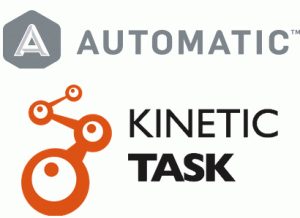What’s New at Kinetic: Building Smart in 2026
At Kinetic, we believe the future of Business Process Management isn’t bigger—it’s smarter.
by Kelly Heikkila

by Kelly Heikkila
Kinetic Task is a proven, powerful workflow automation tool used by some of the world’s largest enterprises. From simple approvals to complex employee onboarding processes, Kinetic Task enables agile process management in an often rigid world.
With the release of Kinetic Task 4.0 this fall, we wanted to expand the reach of application integration while making it easier to use for both process authors and administrators. This means that triggering processes from Salesforce.com or JIRA or ServiceNow is as easy as triggering a process from our own Kinetic Request service request portal application. The same open architecture that has always powered our task handlers for outbound connectors is now also available inbound from nearly any triggering application. This opens up a world of new opportunities.
 While enterprise application integration is interesting, finding other automation opportunities in everyday life is a fun way to push the application. One company doing some really interesting things in the Internet of things (IoT) realm is Automatic. Automatic makes a hardware device that plugs into your car’s data port (available on most cars since the 1996 model year). With their iOS and Android app, you can now learn much more about how your car functions and your driving habits including gas mileage, sudden acceleration and braking, and more.
While enterprise application integration is interesting, finding other automation opportunities in everyday life is a fun way to push the application. One company doing some really interesting things in the Internet of things (IoT) realm is Automatic. Automatic makes a hardware device that plugs into your car’s data port (available on most cars since the 1996 model year). With their iOS and Android app, you can now learn much more about how your car functions and your driving habits including gas mileage, sudden acceleration and braking, and more.
Like many companies recently, Automatic has realized that allowing others tools to interact with their product enables uses of the product developers never even thought of when designing it. One strategy that works well in conjunction with Kinetic Task is using webhooks. Webhooks are built into many modern web-based applications. Essentially, they push some data to a URL you configure based on an event within the system (such as a record being saved or updated, a car ignition switch turning on/off, a light switch being toggled, etc.).
Kinetic Task 4.0 allows you to push data to it in a generic way via webhooks. The documentation for the URL you should use and more can be found here on Kinetic Community.
Automatic then has a couple of different ways to trigger webhooks:
We’ll be giving away five Automatic devices at this year’s BMC Engage conference in Orlando this week (October 13-16, 2014). If you’re in town, please stop by and say hello and sign up to win and can’t wait to see what you come up with!
If you haven’t tried out Kinetic Task, you can download it today.
For extra credit, find out what other IoT applications have event based triggers you can connect to. A few we’ve wanted to explore are the SmartThings home automation system, the iRobot Roomba cleaning system, and Nest.

At Kinetic, we believe the future of Business Process Management isn’t bigger—it’s smarter.

IT support automation uses software workflows, rule engines, AI/ML, and integrations to automate...

Business process reimagined is the strategic renewal of how work gets done by combining modern digital...